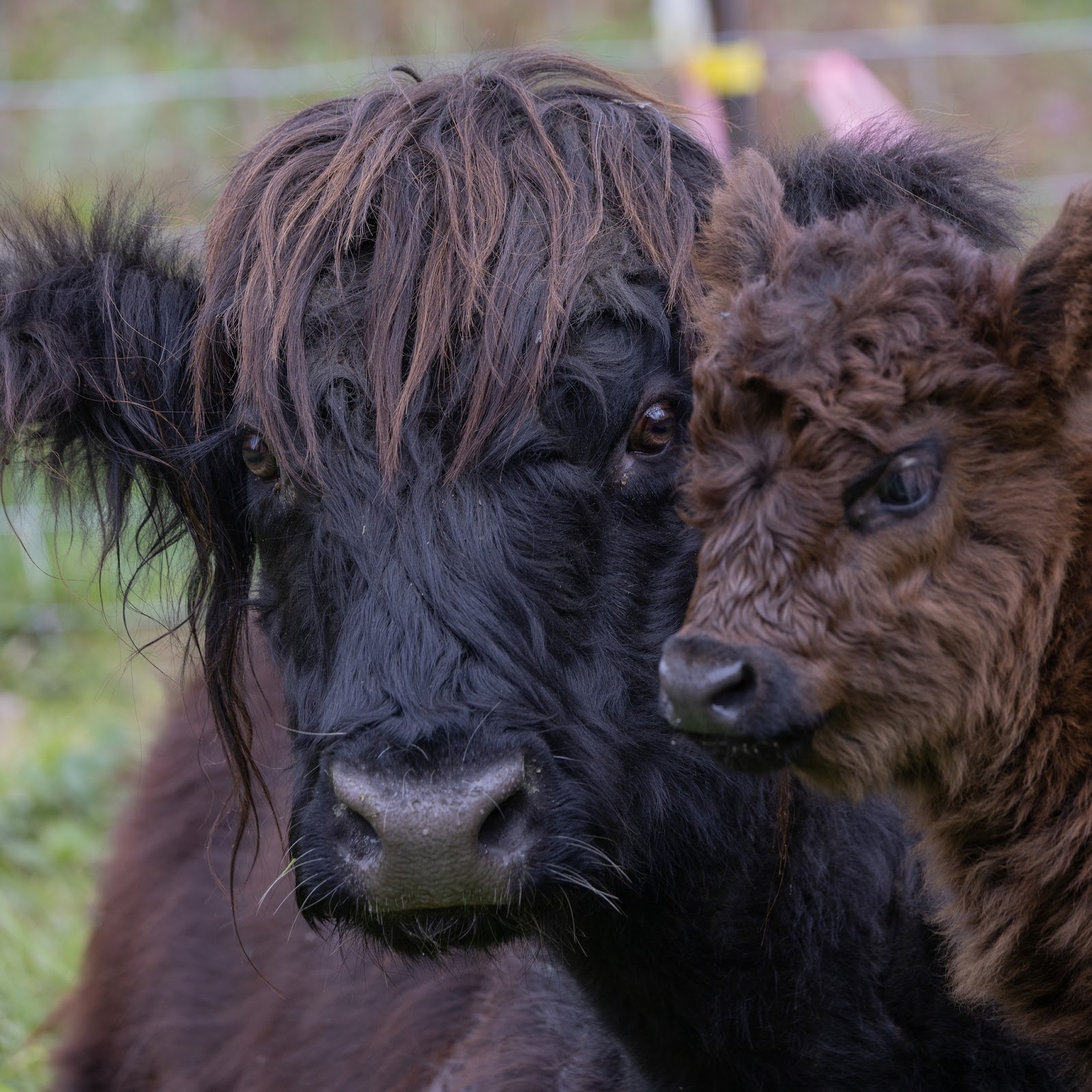Why we don’t offer “Bottle babies”
In the nearly 30 years that we’ve raised Scottish Highlands we have not had the need to bottle feed our Highland babies, intentionally taking a baby from it’s mother with the intent to raise it on a bottle. Now that is not to say we have not bottle fed calves at all, as we have purchased dairy cross calves and raise as feeders, mostly steers occasionally a heifer, and dairy are removed from their dam due to the economics of milking.
Before I begin, I want to say that raising a bull on a bottle can be dangerous and should be avoided. Though I see it every day “bull for sale, raised on a bottle, sweet and gentle”. When they reach sexual maturity they are not the same cuddly little calf who was raised on a bottle. Bulls in general should never be trusted but bulls raised on a bottle can be more unpredictable and more dangerous. They have learned not to fear or respect humans, but to see them as a competitor, much like wild animals that have learned not to fear or respect humans. So that’s all I have to say about bottle raising a bull, just avoid it if you can
.
Calves in general should be raised by their moms if at all possible, bottle fed only as a last resort. They should not be taken from their moms for human amusement. They can be gentled once they are weaned. What they learn from their dams and the herd environment they can not learn from human interaction. When they are raised on a bottle much of the time their human caregiver mistakes their need to eat to survive for a love of their human. They don’t see us as their cuddly buddy they see us as a source of food and their need to survive. As they get bigger the problem gets bigger. They become pushy, yeah, heifers as well as steers.
It is a lot of work to correct this behavior because we allowed it as a cuddly baby. Rubbing their head on you, bouncing around you like a jack in the box or coming up behind you and sticking their head between your legs (that’s how a lot of calves are bottle fed) or rubbing on your back, is so dang cute till they get to be 500 pounds. Then when they hit you in the back with their head because they learned it was acceptable as a baby, or bounce around in front of you in a challenging manor, put their head down and try to push you because you’ve been “scratching them on their head” as a baby, it’s not fun and games any more. These are things that are extremely difficult to stop once it has been allowed, and they become dangerous behaviors for their “Human buddy”.

.Even adult cows see us as a source of food. All training is food related. That’s how we get the response we want, is with food. Are they ever really pets, I don’t think so. We used to raise horses and horses and cows are so different. I truly believe horses have the ability to love and show love, not just out of a response to food. Cows not so much. I think they have a survival code that they live by. The most important thing to remember is from the beginning they need to be taught what is and is not allowed with human interaction. That their special person is the top of the food chain as well as the top of the pecking order in their herd. They don’t have to like you but they have to respect you.
If you watch cows interact with each other in the field, it only takes a glance from the boss cow to get others to move away from the food dish. If you want to know how the pecking order really works put out half as many dishes as you have cows. See who gets the first, second, third etc., food dishes first. You will not see any of the cows challenge the head cow, not even when she gets old, she’s earned that position. She is not mean, she can be the most gentle in the herd but she gets her point across. Little calves learn this behavior early on, bottle raised calves do not. You need to be just above her to your herd.
We interact with our cows everyday. Most accept field brushing and petting, all come when they are called, they all love treats and all know where we stand it the pecking order. Given all of these facts I still never walk into our pasture without a “walking stick”, they have been known to get as close as possible to follow me back to the barn, and if one gets a little frisky I am likely to get ran over accidentally. So I keep my eye on them to know how close they are getting and they are only allowed as close as the end of my stick (about 5-6 feet) when they are following me. It’s just respect.
In as much as we like to think of them as pets, please remember, they have a mind of their own, and most of the time we don’t know what they are thinking, and we need to be aware and stay safe by being one step ahead of them. Enjoy them, but most of all be safe, leave the feeding to their mom’s till they are weaned, you’ll be glad you did.


